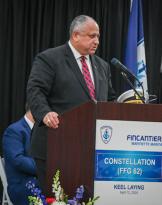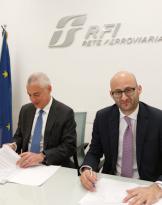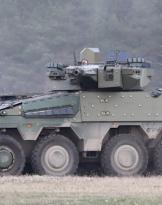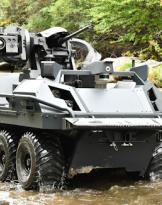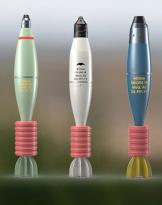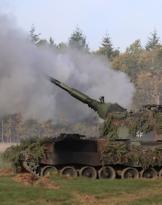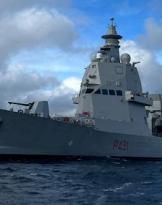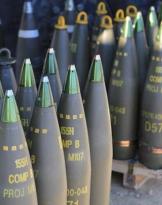The next refueling mission (CRS-18) to be launched from Cape Canaveral, Florida, will send a special "steam engine" to the International Space Station (ISS). RUBI (Reference mUltiscale Boiling Investigation), a fluid mechanics experiment designed and implemented by Airbus for the European Space Agency (ESA), studies the fundamental principles of boiling fluids. ESA astronaut Luca Parmitano will install RUBI in the ISS Columbus module during the five months of its "Beyond" mission (July to December 2019). The experiment will then be performed and monitored by the Belgian User Support and Operation Center (B-USOC) in Brussels.
RUBI will study phase transition phenomena and heat transfer during fluid evaporation on a microscopic and macroscopic scale. The key element of RUBI is a cell filled with a fluid, which can be heated and cooled thermoelectrically. The boiling process is then activated using a laser on a metal-coated glass heater. High resolution cameras record the formation and development of vapor bubbles in both the visible and infrared spectrum. By shooting up to 500 images per second, RUBI cameras are able to create a three-dimensional representation of the shape of the bubbles and analyze the thermal distribution on the heater, allowing scientists to accurately determine evaporation conditions and heat flux densities . The boiling process can be influenced in a systematic way using a high voltage electrode (up to 15.000 volts) and an adjustable convection circuit.
On Earth, due to the force of gravity, only small bubbles are formed which quickly detach from the heated surface, masking other physical effects. Scientists want to optimize their numerical models of the boiling process through a series of tests conducted in the absence of gravity and corresponding to the reference tests on Earth. In the future, these tests could contribute to the production of household appliances (such as stoves and radiators) and heat exchangers, creating more efficient and environmentally-friendly industrial production processes.
One of the main challenges faced by the Airbus-led industrial team was to reduce RUBI to the size of a "shoebox" (40 x 28 x 27 cm) weighing only 34 kg, so that it could be used in space. In comparison, a laboratory installed on Earth would have a size similar to that of a cabinet (2 x 1 x 1 m), for a weight of approximately 300 kg.


